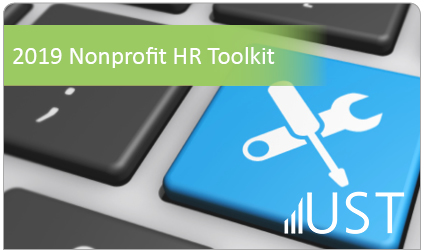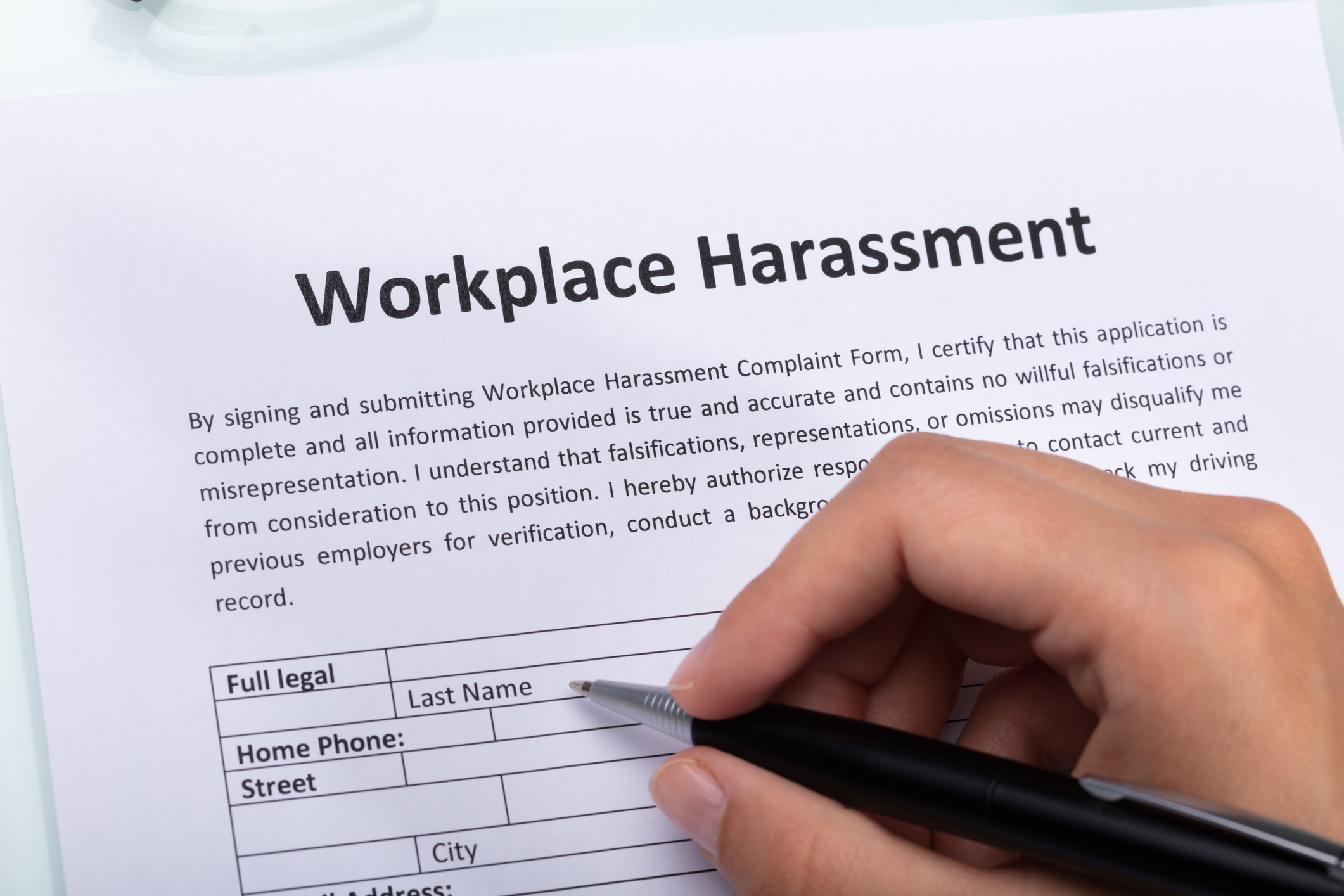
Nonprofit employers have been dealing with employee burnout for some time now but knowing what factors to focus on can go a long way in prevention. It’s a crisis that can trigger a downward spiral in both the individual’s performance as well as the organizations’ and can end up costing thousands of wasted dollars.
Job burnout is a special type of work-related stress and one that has long been lacking official recognition even though it has nearly become an epidemic—until now. The World Health Organization (WHO), recently identified workplace burnout as an “occupational phenomenon” that may require medical attention. They state, that burnout is a syndrome conceptualized as resulting from chronic workplace stress that has not been successfully managed and characterize by three dimensions: feelings of energy depletion or exhaustion, increased mental distance from one’s job or feelings of negativism or cynicism related to one’s job, and reduced professional efficacy.
Employees experiencing burnout at work are often physically, mentally and emotionally exhausted from the job. They are more likely to take frequent sick days, exude more negativity, reduce team moral and worse, start looking elsewhere for employment opportunities. They become fixated on problems rather than growth opportunities or development. Now, more than ever before, we’re doing more with less, working longer hours, taking fewer breaks and less vacation days. Burnout is a serious workplace concern and is detrimental to the health of everyone involved—managers, co-workers, loved ones and friends.
There are often many factors that cause job fatigue but managers play an important role in helping to avoid this occupational phenomenon. Employees who trust their managers are more likely to experience meaningful work. Below are some key strategies for building that relationship and reducing employee burnout:
1. Check-in daily – we’re not talking about a daily 30-minute meeting but a simple “Good Morning”, “How was the school play last night” or “Any plans for the weekend”. These brief interactions can make a huge impact on someone who may be struggling.
2. Listen actively – being a good listener when an employee comes to you with an issue is a critical step in earning their trust and developing a solid bond.
3. Make time for team-building – creating a team that is unified provides another line of emotional support for an employee who is struggling. Co-workers often understand better than anyone else the struggle of being burnt out.
4. Encourage break time – everyone needs to take a break to stay connected and focused so ensure your employees are taking the time to recharge.
5. Make work purposeful – being connected to your mission isn’t enough so give your employees more reasons for making their job feel important.
6. Always say please and thank you – two very simple terms that are extremely underused in the workplace. Showing appreciation and respect can go a long way.
7. Put the right people in the right place – make sure your employees have the opportunity to do what they do best so you get the best of what they have to offer and they feel fulfilled.
If you don’t address the causes of employee burnout in your nonprofit, you’re missing the opportunity to create a workplace environment that empowers employees to feel and perform their best. Employee burnout is no longer just an HR issue, it’s a public health issue and one that can be managed before it even hits. Develop healthy workplace habits that begin with managers who foster positive experiences and ensure you have policies in place that help recognize the triggers before they get out of control.
Here at UST, we’ve compiled some of our top unemployment guides for managing nonprofit unemployment risk and created the 2019 Nonprofit UI Toolkit. These tools provide valuable information that can help nonprofit organizations like yours better understand the ins and outs of unemployment from the employer’s perspective.
These tools offer exclusive access to unemployment claims management tips, how-to-guides and an informative webinar recording. Plus, you can learn about best practices for unemployment compensation and the ideal approach to take when dealing with unemployment hearings.
Want access to more nonprofit how-to guides, checklists and resources? Sign up for UST’s monthly eNews!

Question: We hire interns (generally students in their junior and senior years) to do professional work for clients alongside, and under the supervision of, our professionals. They earn at least twice the salary test wage of $455 per week and are paid on a salary basis. Are they eligible for overtime pay?
Answer: Maybe. The Fair Labor Standards Act (FLSA) and state wage and hour laws exempt certain categories of employees from overtime. These interns may qualify as exempt employees under the “learned professional” employee exemption.
To meet for the learned professional employee exemption and be exempt from both minimum wage and overtime pay, all of the following criteria must be met:
See WHD Fact Sheet #17D: Exemption for Professional Employees Under the Fair Labor Standards Act (FSLA) for additional information explaining the learned professional exemption.
If the employees meet the exemption requirements, they would not be entitled to overtime. If the employees do not meet the requirements, it still may be possible that they qualify under one of the other white collar exemptions.
Q&A provided by ThinkHR, powering the UST HR Workplace for nonprofit HR teams. Get your free 30-day trial here.

Question: Last week our offices were closed because of inclement weather. Do we need to pay our employees for the week? If not, would they be eligible for unemployment compensation?
Answer: When your business closes early, opens late, or closes for the week due to inclement weather, how you pay employees will depend on whether you have an inclement weather policy or an established practice for office closures. If you do not have a policy or practice, whether your employees are eligible for unemployment compensation depends on whether they are nonexempt or exempt. Further, whether employees would be eligible for unemployment insurance depends upon the circumstances and the particular state; employees may be able to qualify for some assistance through the state’s unemployment department.
Nonexempt employees need to be paid only for the time they have actually worked. If they have paid time off (PTO) accrued (whether vacation time or a PTO plan), then the company could deduct hours from the accrued bank to continue their pay, if the employee so desires.
If nonexempt employees come to work but are not allowed to work their full scheduled shift, a number of states impose a reporting time obligation requiring employees to be paid a minimum number of hours if they have reported for work.
However, exempt employees are paid on a salary basis and must be paid the same amount each week, regardless of the amount of work that they do. If you have a PTO plan, you can deduct from the exempt employee’s vacation or accrued time off bank to make the salary whole.
For example, management decides to send everybody home four hours into the day due to a blizzard and the offices remain closed the next day. Joe is an hourly employee in the warehouse with no accrued PTO and Mary is an exempt-level office manager with five days (40 hours) in her PTO bank. Joe would receive the four hours of pay for the day he worked and no pay for the remainder of that day or the following full day. If the company does not wish to pay Mary her entire pay for the time the office was closed, it may elect for her to receive four hours of regular pay for the time worked, and deduct from her PTO bank for 12 hours (the four hours remaining on the first day and eight hours for the next day). Mary will receive her full pay for the week.
Q&A provided by ThinkHR, powering the UST HR Workplace for nonprofit HR teams. Get your free 30-day trial here.

Here at UST we’ve put together our Top 10 Guides for 2019 Nonprofit Human Resource management. And for a limited time, we’re giving them away for FREE.
Since 1983, UST has provided nonprofits with the latest HR resources in an effort to help organizations stay compliant, maximize employee bandwidth and reduce overhead costs. This toolkit includes updated 2019 state and federal minimum wage data and recordkeeping requirements, as well as checklists to ensure compliance. Plus, you can learn the top six strategies to develop and maintain a thriving workplace.
Still have questions? You can get a free 30-day trial of UST HR Workplace powered by ThinkHR, a cloud-based service that aims to reduce HR liability through a live expert hotline, 250+ online compliance courses, compensation tools, employee handbook builders, and employee classification step-by-step guides. Set up your ThinkHR trial today!

Question: How can you determine whether a worker is an independent contractor or employee?
Answer: Generally, independent contractors are self-employed individuals who work on special projects that require no training, may work from either the employer site or another location, and do not need direction or the company’s materials to do the job. Additionally, these individuals are typically paid based on contract milestones.
Under federal “common law” rules, anyone who performs services for you is your employee if you can control what, when, and how the work will be done. This is true even if the person in question has the freedom to determine when certain work actions are taken. According to the IRS, “What matters is that you have the right to control the details of how the services are performed.”
Some states look to the federal common law rules, while others, such as Oregon, New York, and California, have their own additional tests of whether an individual is an independent contractor or employee. Many states publish fact sheets or handbooks with these guidelines to aid employers in making the appropriate classification.
The key in making this determination is to look at the entire relationship, consider the degree or extent of the right to direct and control, and finally, document each of the factors used in coming up with the determination.
In determining whether the person providing service is an employee or an independent contractor, all information that provides evidence of the degree of control and independence must be considered. In short, you will want to examine this decision carefully, so as to avoid tax consequences by misclassifying someone as an independent contractor.
Source: www.irs.gov/Businesses/Small-Businesses-&-Self-Employed/Employee-(Common-Law-Employee)
Q&A provided by ThinkHR, powering the UST HR Workplace for nonprofit HR teams. Get your free 30-day trial here.

Question:One of our employees has asked to bring her 16-year-old daughter to work so she can volunteer for school credits. Can we allow this?
Answer: It depends. Under the federal Fair Labor Standards Act (FLSA), employees may not volunteer services to for-profit private sector employers. However, private employers may have trainees or students in the workplace under the School-to-Work program (STW) or an internship program.
If you want to allow your employee’s daughter to do work for you as an intern, you will need to classify her as such. Keep in mind internships can be either paid or unpaid. The United States Department of Labor (DOL) uses six criteria to determine whether an internship is exempt from the minimum wage and overtime requirements of the FLSA (meaning the internship may be unpaid). Under the DOL test, for an intern to be exempt from the minimum wage and overtime requirements, all of the following must be true:
For more information on the DOL six-factor test, see Fact Sheet #71: Internship Programs Under the Fair Labor Standards Act. Note that the 2nd Circuit (Connecticut, New York, and Vermont) and the 11th Circuit (Alabama, Georgia, and Florida) do not use the DOL six-factor test but instead use the “primary beneficiary test.” Under the primary beneficiary test, a court determines whether the employer or worker benefits more from the internship. If the employer benefits more, the worker is properly classified as an “employee” and is entitled to minimum wage and overtime. If the individual benefits more, he or she is properly classified as an unpaid intern or trainee and exempted from the minimum wage and overtime requirements (nonemployees). As unpaid internships have proven to be a litigious area of employment law, seek legal guidance before electing to not pay an intern.
Finally, beyond these exceptions to the FLSA, if your employee’s minor 16-year-old daughter will be doing any work for the company not as an intern, she must obtain a work permit, must be paid at least the applicable minimum wage, and is entitled to the protections afforded other employees. You’ll also need to consider that each state has its own laws governing the employment of minors. Check here to review the laws applicable to your state.
Q&A provided by ThinkHR, powering the UST HR Workplace for nonprofit HR teams. Have HR questions? Sign your nonprofit up for a free 30-day trial here.

March resulted in positive job growth with employers adding an additional 196,000 jobs with considerable job gains in the healthcare and professional/technical services. Employment growth averaged 180,000 per month in the first quarter compared to the 223,000 per month in 2018 and this month the unemployment rate remained the same at 3.8 percent. The number of unemployed persons remained unchanged at 6.2 million.
During the month of March, the number of long-term unemployed (those jobless for 27 weeks or more) showed minimal to no change at 130 million and accounts for 21.1 percent of those unemployed. With the labor force participation rate at 63 percent, it showed slight change over the course of the month and little movement on net over the past 12 months. In addition, the number of persons employed part-time for economic reasons (referred to as involuntary part-time workers) showed small changes at 4.5 million in March. To explain, these are individuals who would have preferred to have full-time employment and were working part-time due to their hours being reduced or unable to find full-time employment.
Job gains occurred in health care adding 49,000 jobs and 398,000 over the past 12 months. This growth increased employment in ambulatory health care services (+27,000), hospitals (+14,000) and nursing/ residential care facilities (+9,000). In addition, there was a significate increase in the professional and technical services of 34,000 and 311,000 over the past 12 months. The growth increased employment in design and related services (+12,000), architectural engineering services (+6,000) and management and technical consulting services (+6,000). Employment also showed an upward trend in food services and drinking (+27,000) as well in construction (+16,000) with an increase of 246,000 over the past 12 months.
In March, average hourly earnings for all employees on private nonfarm payrolls increased by 4 cents to $27.70, following a 10-cent gain in February. Over the past 12 months, average hourly earnings have increased by 3.2 percent. Average hourly earnings of private-sector production and nonsupervisory employees increased by 6 cents to $23.24 in March.
With the revisions of both the January and February’s job reports, the number of jobs went from +311,000 to +312,000 for January and +20,000 to +30,000 for February – combined there were 14,000 more jobs than previously reported. These changes show a continual growth in employment and the upward trend of different sectors benefiting from this positive job growth.

Question: We received a request from the State Department of Labor, Division of Research and Statistics, to provide information for “Occupational Employment Statistics Report in cooperation with the U.S. Department of Labor.” Is our participation mandatory or required?
Answer: Your state department of labor has asked you to participate in the Bureau of Labor Statistics (BLS) Current Employment Statistics survey. Providing information is voluntary under federal law and is mandatory under state law only in North Carolina, Oregon, and South Carolina.
The report is based on a sample of 390,000 business establishments nationwide. The survey produces monthly estimates of employment, hours, and earnings for the nation, states, and major metropolitan areas. Preliminary national estimates for a given reference month are typically published on the first Friday of the following month, in conjunction with data derived from a separate survey of households, the Current Population Survey. See the Bureau of Labor Statistics Current Population Survey page and the Current Employment Statistics page for more information.
Although voluntary in most states, employers are encouraged to complete and submit the report accordingly. No penalties exist for those who choose not to report in states where participation is not mandatory.
Q&A provided by ThinkHR, powering the UST HR Workplace for nonprofit HR teams. Have HR questions? Sign your nonprofit up for a free 30-day trial here.

Most people spend the majority of their weekday hours getting ready for work, commuting to and from work and actively working. As a standard rule of thumb, we make it a priority to ensure we live in a safe environment at home–free from negative energy. But what about our work environment? How can we ensure the environment is safe there as well?
Some typical issues encountered in the workplace that can be bothersome include poor lighting and fluctuating temperatures, but other issues that are surprisingly common that can seriously undermine employee health are workplace bullying and sexual harassment. These types of behavior can have an extremely negative impact on the well-being, productivity, and health of everyone in the office, not just those directly involved. Creating a safe work environment means focusing on culture and eliminating harmful behavior.
Many people think these negative behaviors stop once the graduation caps have been tossed in the air. Unfortunately, bullying is a common problem that can occur in any setting involving a large group of people, and the workplace is no exception. With digital tools like office chatrooms, texting, and email, there are more ways than ever for abusers to target others. Workplace harassment can encompass a number of harmful behaviors, including threats, humiliation, sabotage, and intimidation. It is this repeated harassment that can affect the victim’s ability to concentrate and/or feel safe at work.
One of the biggest problems with workplace harassment is that many people don’t recognize it when they see it. Not all harassment is obvious. Sometimes, it’s subtle and the effects build up over time. Alternatively, the abuser may be using digital tools that no one else can see rather than engaging in inappropriate behavior in front of others. In other cases, people that are witness to bullying may not feel safe coming forward. Research indicates that a shocking 37% of workers in the United States have been directly bullied in the workplace. When you factor in the people who witnesses bullying, the number reaches 49%. All in all, even if a person hasn’t been bullied on the job, chances are they know someone who has. Because of the negative consequences, these behaviors are a leading contributor of toxic work environments around the country.
Not only does workplace harassment cause victims to lose their confidence and experience increased stress, it can also lead to poor productivity, illness, and possibly, to the person quitting. A toxic culture increases turnover rates and can even open up companies to legal trouble if allowed to continue.
Workplace harassment is a serious issue and should therefore, be handled promptly. Not only can it lead to mental and physical health problems for your employees, it can also impact your bottom line and even hurt your reputation. Eliminating toxic behavior through education and awareness are key when it comes to ending workplace harassment of any kind and of the utmost importance in creating a safe and healthy work environment. Mandatory trainings for managers and employees, strict policies on harassment, and other safeguards can help ensure a safe and healthy environment for all.
This article was created in collaboration with Quinn Cooley of DC Scholarships.

UST maintains a secure site. This means that information we obtain from you in the process of enrolling is protected and cannot be viewed by others. Information about your agency is provided to our various service providers once you enroll in UST for the purpose of providing you with the best possible service. Your information will never be sold or rented to other entities that are not affiliated with UST. Agencies that are actively enrolled in UST are listed for review by other agencies, UST’s sponsors and potential participants, but no information specific to your agency can be reviewed by anyone not affiliated with UST and not otherwise engaged in providing services to you except as required by law or valid legal process.
Your use of this site and the provision of basic information constitute your consent for UST to use the information supplied.
UST may collect generic information about overall website traffic, and use other analytical information and tools to help us improve our website and provide the best possible information and service. As you browse UST’s website, cookies may also be placed on your computer so that we can better understand what information our visitors are most interested in, and to help direct you to other relevant information. These cookies do not collect personal information such as your name, email, postal address or phone number. To opt out of some of these cookies, click here. If you are a Twitter user, and prefer not to have Twitter ad content tailored to you, learn more here.
Further, our website may contain links to other sites. Anytime you connect to another website, their respective privacy policy will apply and UST is not responsible for the privacy practices of others.
This Privacy Policy and the Terms of Use for our site is subject to change.
UST maintains a secure site. This means that information we obtain from you in the process of enrolling is protected and cannot be viewed by others. Information about your agency is provided to our various service providers once you enroll in UST for the purpose of providing you with the best possible service. Your information will never be sold or rented to other entities that are not affiliated with UST. Agencies that are actively enrolled in UST are listed for review by other agencies, UST’s sponsors and potential participants, but no information specific to your agency can be reviewed by anyone not affiliated with UST and not otherwise engaged in providing services to you except as required by law or valid legal process.
Your use of this site and the provision of basic information constitute your consent for UST to use the information supplied.
UST may collect generic information about overall website traffic, and use other analytical information and tools to help us improve our website and provide the best possible information and service. As you browse UST’s website, cookies may also be placed on your computer so that we can better understand what information our visitors are most interested in, and to help direct you to other relevant information. These cookies do not collect personal information such as your name, email, postal address or phone number. To opt out of some of these cookies, click here. If you are a Twitter user, and prefer not to have Twitter ad content tailored to you, learn more here.
Further, our website may contain links to other sites. Anytime you connect to another website, their respective privacy policy will apply and UST is not responsible for the privacy practices of others.
This Privacy Policy and the Terms of Use for our site is subject to change.